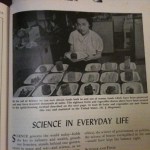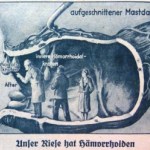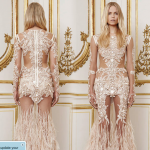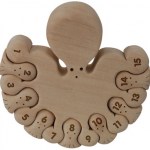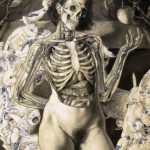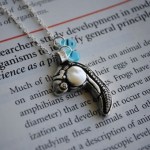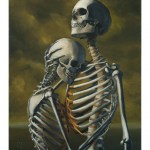biology
I got a very nice email today from Sam Gaty, one of the filmmakers behind the Synthetic Biology Documentary I blogged about earlier. He acknowledged the "mad scientist" type concerns, but emphasized that's not what they're going for in the final documentary, and suggested I share another short clip. This one is far more, I don't know how to describe it, techno-chic?
I can definitely see that sort of presentation getting kids interested in biology. It spins bench science as something intriguing, cutting edge, maybe a little hipster. Framing really is all in the aesthetics, isn't it?
Check…
So I'm all in favor of promoting struggling artists, and that includes documentary filmmakers. But I have to say I'm a little taken aback by the aesthetic of the "Synthetic Bio" documentary project by Field Test Films (and endorsed by Carl Zimmer). They've posted a short over at Kickstarter, where they're trying to raise $30K to finish the film in time for Sundance. But as one of my biologist friends pointed out, the soundtrack they use for the sample short (on producing spider silk in goat's milk) is eerie, mad-scientist stuff, complete with a Exorcist-like choir at the end.
I'm posting the…
I found this children's encyclopedia in a pile of books on the curb a few weeks ago. Some of its depictions of science are charming; some are odd, and all are really, really dated. More snapshots below the fold. . .
Observatory is hosting another great event tonight:
From Heumann Heilmittel, "Eine Reise durch den menschlichen Körper" (1941)
Body Voyaging: an illustrated lecture with Kristen Ann Ehrenberger
Date: TONIGHT, Monday, January 17th
Time: 8:00 PM
Admission: $5
Presented by Morbid Anatomy
We human beings have a seemingly insatiable desire to experience the bodies underneath our skins. While many scholars have treated the subject of looking into or through bodies via medical imaging, one perhaps understudied trope is that of "body voyaging." A few writers and artists have imagined what it…
Caption for non-PhDs: aren't these sciencepunk brain ice cubes awesome? BRAIN FREEZE!
Caption for PhDs: Still hoping against hope to celebrate your thesis defense in style? Try cocktails with roughly anatomically accurate cortical ice cubes. [Look at it this way: even after six years of beating your bruised cerebrum against intransigent experiments and unsympathetic advisors, you can still out-think and out-publish a chunk of solidified H2O! Take comfort in that, have a stiff drink, be liberal with the bitters - and good luck with those postdoc applications.]
P.S.: They're on sale here, or…
Isis the Laboratory Goddess sent me a Buzzfeed link featuring this incredible anatomical gown:
The artist/seamstress deserves credit for what appears to be an incredibly elaborate embroidered stiff satin gown that, on different panels, depicts circulatory, skeletal, muscular and pulmonary systems. Wow. I can't figure out who made it, so if you know the original source, please email me the link so I can update the post with the creator's information Mystery solved! The photo is by miyake juin, from a Fashion Week event at Shih Chien University. The gown's designer is Chinese; I direct you to…
A new biology game called EteRNA "crowdsourc[es] the scientific method" by inviting players to design their own self-folding RNAs. The best designs are synthesized and tested in the lab to see how well the predicted structure plays out in the physical world - an innovation the game's creators see as an improvement over other folding games like Foldit, where there is no experimental feedback.
"Putting a ball through a hoop or drawing a better poker hand is the way we're used to winning games, but in EteRNA you score when the molecule you've designed can assemble itself," said one of the PIs…
The NYT has a great little article about Chevalier Jackson, a turn-of-the-century doctor who kept a collection of foreign objects removed from people's throats. Dr. Jackson
"preserved more than 2,000 objects that people had swallowed or inhaled: nails and bolts, miniature binoculars, a radiator key, a child's perfect-attendance pin, a medallion that says "Carry me for good luck." . . . He was so intent on assembling his collection that he once refused to return a swallowed quarter, even when its owner threatened his life."
On February 18, the Mutter Museum, which owns Jackson's collection,…
Here are some essay links I've had open as tabs in my browser for over a week, waiting to be posted. Unfortunately, I don't have time to do the extensive commentary they deserve, so I'm admitting that, and just posting them already. Enjoy.
Graphical Abstracts & Biologists as Designers
Andrew Sun discusses "graphical abstracts" at nature network:
Although they are irrelevant to the quality of the research in my opinion, graphical abstracts (GAs) are in fact increasingly appreciated nowadays. No matter you like them or not, chances are that you have to draw one in order to publish your…
This wooden octopus counting toy is adorable!
The only odd thing here is that the tentacles and baby octopi are numbered in a single sequence. It makes sense, I suppose - you want the child to put the numbers in the proper order, and that works better if you're filling gaps between numbers: 1 _ 3 _ 5, etc.
It's just . . . unexpected to see an octopus with a tentacle marked "15."
Wait - a second odd thing is that it has a small parts warning: for 3 yrs & up. Aren't most kids losing interest in basic counting toys by 3-4? Oh well, it's still adorable.
Via NOTCOT.
Back in December, I took issue with a highly irritating article by someone who normally should know better, Jonah Lehrer, entitled The Truth Wears Off: Is There Something Wrong With the Scientific Method?, so much so that I wrote one of my typical long-winded deconstructions of the article. One thing that irritated me was contained in the very title itself, namely the insinuation that the "decline effect," which is the tendency of effects observed in early scientific experiments demonstrating a phenomenon to "decline" or become less robust as more and more experiments are performed, is…
NYC scientist and filmmaker Alexis Gambis is building a body of science-themed short films. His documentary A Fruit Fly In New York juxtaposes lab equipment with the infrastructure of New York City; between grad students and postdocs relating the (somewhat deadpan) joys of fruit fly research, befuddled New Yorkers puzzle over a vial of Drosophila ("that's something I don't want on my body"). I was surprised and tickled to see that one of my friends, a former fly researcher, makes an appearance. The scientific community is so small!
The clip I enjoyed most, though, is the one I've embedded for…
Michael Reedy's drawings are like 1980s Visual Man and Woman models plopped down in a half-excavated quarry of visual and literary allusions. He achieves a cut-paper, graphic feel by composing on superimposed planes, sort of like a stage set, with strategic uses of outlining and negative space. And he is a master of figure drawing (he teaches it, so he'd better be). When an artist really knows figural anatomy, he/she doesn't need to do anything flashy with it: you can just tell.
While it's not one of the overtly anatomical drawings (like malum E, above), I'm totally captivated by Blash, a…
This series of sciart wallpapers by Dan Funderburgh were inspired by the Time-Life Science Library, a series of educational books published in the 1960s. For those of us old enough to remember them, Time-Life's series are objects of nostalgia in themselves. Coupling the vintage design and palettes of those books with vintage sci-art symbolism yields a sharply contemporary set of prints.
Funderburgh describes his work as "a repudiation of the fabricated schism between art and decoration;" you could also describe it as a repudiation of the fabricated gulf between science and design. (Fun…
Virginia Hughes, once the benevolent overlord here at Scienceblogs, asks the Question of the Year: What is Life, Anyway? She notes that many of the major scientific discoveries or advances of the year hinged on that question, and this month's Astrobiology has a series of essays on the state of our understanding. She explains:
Is life simply the ability to reproduce? Well, no. If that were true, as one scientist famously noted, then âTwo rabbitsâa male and femaleâare alive but either one alone is dead.â In 1994, a NASA committee deemed that life is âa self-sustaining chemical system capable…
I have no idea how I missed this before the holidays (sorry!), but NBDesigns has a line of oxidized silver embryo jewelry that is pure vintage lab-chic. The embryonic mice are particularly adorable:
And, on the less-cute, more-sciency end of the spectrum, her embryonic chicks look just like illustrations in an old dev bio textbook:
I should also note, since we are coming up on Valentine's Day, that she makes Erlenmeyer flask earrings and pendants with little hearts. (You can also request a glass heart worked into the chain of the zebrafish embryo pendant, or check out her sloth & heart…
Via iO9, a Nature News slideshow of natural history engravings by physician Martin Lister's teenage daughters, who contributed technically accurate engravings of shells to one of his books, the Historiae Conchyliorum:
Historians now believe the pair were the first women to use microscopes to help produce some of their scientific drawings. Anna and Susanna's place in the history of science is explored in a biography of Martin Lister in preparation by historian Anna Marie Roos of the University of Oxford's Cultures of Knowledge project. In a recent web post, Roos describes how she stumbled…
The ultimate bioephemera: art you eat! This cephalopod by specialty cake artist Karen Portoleo is definitely NOT a cake wreck (although if there were a little cake(ship)wreck under those tentacles, it might not be a bad addition). Karen previously made a "gingerbread" house with an octopus icing and tiling the roof. For serious.
Thanks to Patricia for the link! (Check out Patricia's art blog, too).
National Museum of Health & Medicine has an amazing flickrstream of vintage medical photographs and other ephemera. Lately they've been adding diagnostic/documentary photos of Civil War soldiers, as well as some military propaganda posters (anti-VD and anti-food waste, of all things). This series of photos of a lab setup for measuring cranial capacity are my favorites. Check out the handled basket of skulls! And they're using an "insufflator!" I did not even know that was a word.
Happy holidays to our friends at Bottled Monsters and thanks for all the wonderful photos!
To Hold You Again
Chris Peters
Artist Chris Peters just wrapped up a winter show at Santa Monica's Copro gallery. I've blogged about his work before; it's inspired by vintage medical illustrations, but his agonized skeletons are ripped from their anatomical atlases to brood in Hopper-esque gas stations, Mad Men-like interiors, and smoky chiaroscuro. Whether you find his work creepy, Goth-chic, spiritual, or even humorous, it's a skilled and thoughtful reboot of the classic tropes of medical illustration.
I'm sorry I didn't get this posted before his latest show closed, but Copro has a…
